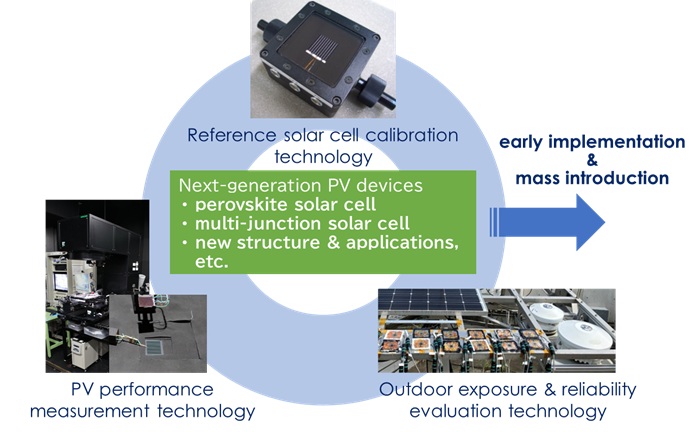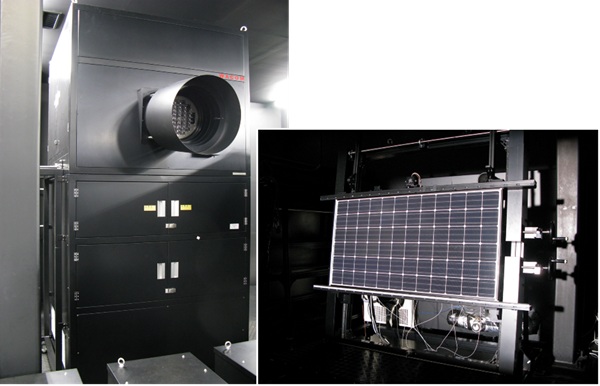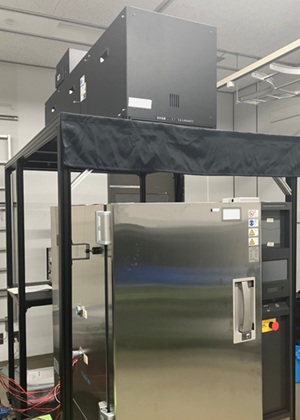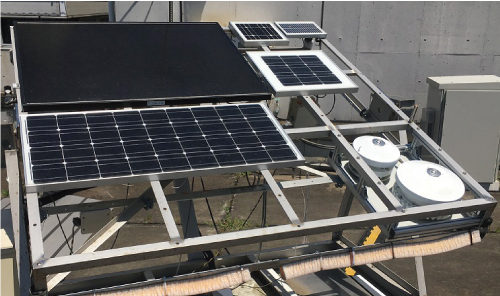Photovoltaic Calibration, Standards and Measurement Research Team
Advanced Performance Characterization Technology for Photovoltaic Cells & Modules and Calibration Technology on Reference Photovoltaic Devices
Overview
As part of efforts to make solar power a main source of energy and to make it a self-reliant and long-term stable power, intensive research and development has been conducted on various types of high-efficiency photovoltaic (PV) devices with novel structures and/or materials, with the aim of developing new PV markets, in addition to conventional introduction such as PV power plants and rooftop installations.
Research Target
This team is engaged in research and development of calibration and performance measurement technologies for PV devices (cells and modules), contributing to the improvement of international competitiveness of Japanese PV industries and the mass introduction of PV systems in Japan.
The research targets are;
- Improvement of calibration capability of reference PV devices (Tsukuba Center)
- Precise and reliable performance measurement technologies for novel PV devices (Tsukuba Center)
- Analysis and evaluation technologies for emerging PV devices such as perovskite solar cells (Tsukuba Center)
- Outdoor performance measurement technologies for PV modules (Tsukuba Center)
- Evaluation technologies of outdoor power generation and long-term reliability for various PV modules (Kyushu Center)

Research Outline
Research overview
We conduct research and development of calibration and performance measurement technologies for PV devices, which directly contribute to the value of PV, and confirm and establish the international conformity of these technologies through the proficiency tests and international comparison measurements.
We provide primary calibration of reference solar cells to the PV community and precise measurements for a wide variety of PV devices from PV manufacturers.
The measurement and calibration technologies developed in the research activities are actively disseminated through standardization such as JIS and IEC.
Furthermore, toward early implementation of the next-generation solar cells such as perovskite solar cells, we are also conducting development of analysis and testing methods that help to elucidate the degradation mechanisms and evaluate the durability and reliability of these solar cells.
Calibration service: Primary calibration of reference PV cells
As an ISO/IEC 17025 accreditation laboratory (IAJapan ASNITE 0021 Calibration) according to international mutual recognition arrangements (MRA) for ILAC and APAC, this team is conducting the primary calibration service of reference PV cell as the AIST request test.
<related information> Primary calibration of reference PV cells
Advancement of reference solar cell calibration technology
We are conducting research and development related to the calibration methods and sophistication of reference solar cells for accurately measuring the irradiance of natural sunlight and solar simulators traceable to the SI unit system when evaluating the power generation performance of solar cells and are also developing related evaluation and measurement equipment.
We regularly provide international comparison measurements and proficiency tests to promote international harmonization as a standard for reference solar cells.
Development of high-precision performance measurement technology for newly developed PV devices
We are conducting research and development of accurate and precise performance measurement technologies for PV devices not only under the Standard Test Conditions (STC) (spectral irradiance AM1.5G, irradiance 1 kW/m2, solar cell temperature 25°C) but also under other conditions with various temperatures and irradiances that are important in actual use.
Using the measurement technologies we have developed, we are conducting high-precision performance measurements of various new solar cells (novel crystalline silicon, III-V, CIGS, perovskite, single-junction, multi-junction, etc.).
Development of durability testing methods and degradation analysis evaluation technologies for perovskite solar cells
We are developing durability testing methods and degradation analysis evaluation technologies for the next-generation solar cells such as perovskite solar cells, as the basis for reliability evaluation tests that will contribute to their practical use.
We are developing characterization protocols that quantify the performance of perovskite cells and modules and accurately measure power loss and degradation, verifying protocol tests to predict early failures (5-10 years) and degradation rates, and developing accelerated test protocols to identify degradation modes.
Development of precise outdoor performance measurement technology for PV modules
There is a need for the development of highly accurate and low-cost outdoor performance evaluation technologies that can be utilized for operation and maintenance (O&M) of PV systems.
We are working on the development of advanced measurement technologies such as outdoor high-speed and high-precision performance measurement methods for PV modules and a non-contact potential measurement method.
Development of technology to evaluate the power generation capacity of outdoor-exposed PV modules (Kyushu Center)
Various types of PV modules of about 70 kW (about 100 kW in future) including not only commercial PV modules, but also newly developed test modules are exposed outdoors at Kyushu Center.
The current-voltage (I-V) characteristics of the PV modules installed in the exposure site are recorded every 10 min and are analyzed with the measured solar irradiance and module temperature in order to evaluate the long-term energy yield of the PV modules.
Activities and Achievements
Improvement of the primary calibration capability
Regarding the primary calibration of reference solar cells, the calibration uncertainty, which represents the highest calibration capability, has been improved from the previous certified value of 0.72% (coverage factor k=2) to 0.44% (k=2).
The validity of the calibration values and uncertainty evaluations is continuously verified through the intercomparisons among the qualified laboratories constituting World Photovoltaic Scale (WPVS).
Development of a high-precision absolute radiometer
We have developed a highly stable and fast absolute radiation measurement technology.
We participated in the International Pyrheliometer Comparison (IPC-XIII) held by the World Meteorological Organization (WMO) and verified that the difference between the World Standard Group (WSG) and the domestic absolute radiometer we developed was within 0.1%.
Laboratory accreditation (ISO/IEC 17025 accreditation) for primary calibration of reference solar cells
We have undergone regular inspections for international MRA accreditation as a primary calibration laboratory for reference solar cells and have been re-accredited with a maximum calibration capability of 0.44% (k=2) (ASNITE 0021 C).
Development of precise performance characterization procedure for perovskite solar cells
We have developed a precise and reliable performance measurement procedure based on the current-voltage (I-V) measurement and the maximum-power-point tracking (MPPT) method for perovskite solar cells.
Development of degradation diagnostic methods for perovskite solar cells
We have developed a degradation diagnostic method for perovskite solar cells using transient current measurements and light-cycle testing.
This provides a simple and non-destructive diagnostic method for mobile ion-induced degradation of perovskite solar cells.
Development of outdoor maximum-output power monitoring technique for PV modules
An outdoor real-time maximum-output-power (Pmax) monitoring technique (ImpVmp monitoring technique) using PV module irradiance sensors (PVMS) was developed.
We applied this technique to crystalline-silicon PV module arrays, including high-efficiency PERC modules, and confirmed that reproducibility of Pmax measurement was within ±1% under the outdoor MPPT operating environment.
Development of technology to evaluate the power generation capacity of PV modules
We have developed methods of estimating the power generation amount with the accuracy of ± 2 % for both conventional crystalline-silicon and silicon-heterojunction PV modules exposed outdoors with considering their annual degradation rates.
Main Research Facilities
Reference solar-cell calibration facilities

Experimental equipment and facilities for PV device performance measurement (I)

Experimental equipment and facilities for PV device performance measurement (II)

Environmental stress testing equipment for PV devices

Outdoor PV testing facility

Outdoor exposure site for PV modules

Team Member
| Title | Name |
|---|---|
| Leader, Team | YOSHITA Masahiro |
| Chief Senior Researcher | TAYAGAKI Takeshi |
| Senior Researcher | IGARI Sanekazu |
| Senior Researcher | CHIBA Yasuo |
| Researcher | KOJIMA Takuto |
| Attached to Research Team | MOCHIZUKI Toshimitsu |
| Attached to Research Team | SAKURAI Keiichiro |
